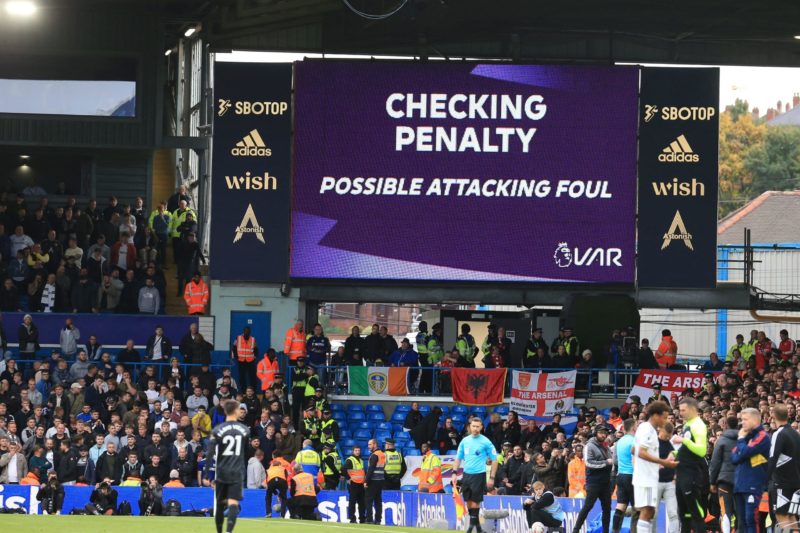VAR. Three little letters have managed to give Arsenal fans sleepless nights and wild celebrations. If you’re a Gooner, you know exactly what I’m talking about. Think of the time we all watched in disbelief as a Gabriel Martinelli goal was chalked off for the softest foul in the build-up. Or the heart-stopping moment when a Bukayo Saka penalty was given after what felt like an eternity of VAR deliberation. Ah, the joys of modern football.
But whether you’re shouting at your screen or refreshing your Betway ZM app to see if that VAR call affected your bet, there’s no denying it: VAR is here, and it’s changed football forever. Let’s take a deep dive into how this revolutionary system has evolved, how it’s been used, and how it’s managed to both improve and ruin football – Arsenal included.
The Early Concept: Video Technology Gets a Foot in the Door
Before VAR ever entered a Premier League stadium, other sports were already ahead of the curve. Cricket had the DRS, tennis had Hawk-Eye, and even American football used instant replay to ensure decisions were spot on. Football, being the beautiful (and traditional) game, resisted the change for a long time. The thinking was simple: football flowed better without interruptions, and the referees’ decisions—right or wrong—were part of the drama.
But after years of controversial decisions, it was clear something needed to be done. VAR was born out of a desire to right these wrongs and provide some level of accountability to referees who, let’s be honest, had a tough gig.
VAR’s Birth: The Trials and First Steps
The idea of VAR wasn’t just thrown together overnight. In fact, it took years of trial runs, committee meetings, and constant re-evaluations before it got the green light. Between 2016 and 2017, initial trials took place in Eredivisie. VAR’s big break came when IFAB (International Football Association Board) officially approved its use in 2018.
While Arsenal fans weren’t directly affected at this early stage, the world of football was buzzing. Would VAR finally fix the mess of bad decisions, or would it bring its own set of problems? Spoiler: both.
VAR’s First Major Test: The 2018 FIFA World Cup
VAR’s big debut came during the 2018 World Cup in Russia. Remember the buzz? VAR overturned decisions left and right, from offside goals to penalties that left teams scratching their heads. In that tournament alone, we saw the power of VAR in action, and it wasn’t without controversy. The system overturned 17 decisions, including France’s opening goal in the final, after a VAR-reviewed handball.
Of course, Arsenal wasn’t in this World Cup, but every Gooner could already imagine how this would play out at the Emirates. Would VAR be a blessing or curse for us?
VAR and Arsenal: The Good, the Bad, and the Ugly
Ah, Arsenal and VAR—what a complicated relationship. One minute we’re cursing the gods of technology and the next, we’re thanking VAR for saving us from a dodgy offside call. Here are some memorable (or painful) moments involving VAR and Arsenal:
- The 2019 North London Derby: the Spurs were awarded a penalty after Son Heung-min went down in the box. VAR checked, and despite replays showing minimal contact, the penalty stood. You can bet Arsenal fans weren’t thrilled with that one.
- David Luiz’s Infamous Red Card Against Wolves: In 2021, Luiz was sent off for what appeared to be the slightest brush of his knee against an opponent’s boot. VAR upheld the red card, and Arsenal went on to lose the game 2-1. Luiz became the face of Arsenal’s VAR misfortune.
- The Saka Penalty vs. Manchester United: Finally, a moment where VAR worked in our favour. After a seemingly endless review, Saka was awarded a penalty, which he coolly converted. Arsenal fans everywhere breathed a collective sigh of relief.
The Evolution of VAR: Improvements and Ongoing Controversy
Since its introduction, VAR has evolved. In the early days, the system faced heavy criticism for slowing down the game and creating confusion. Over time, adjustments were made to make the process smoother, but let’s be honest—it’s still not perfect.
- Clear and Obvious: The phrase we’ve come to know and love (or hate). VAR is only supposed to intervene when a decision is “clear and obvious.” Yet, how often have we seen VAR interrupt play for the tiniest of infractions?
- Offside Drama: Arsenal, like many other teams, has been caught in the web of VAR’s infamous offside lines. Remember when Pierre-Emerick Aubameyang had a goal disallowed because his toenail was offside? Yeah, that was fun.
How VAR Has Changed the Game for Bettors
Let’s not forget how VAR has influenced the world of betting. With VAR constantly reviewing goals, penalties, and offsides, bettors now have to expect game-changing decisions at any moment. For those who enjoy a flutter, it’s a whole new ball game. Think you’ve won your bet when the ball hits the net? Not so fast—VAR might have something to say about that. And if you’re using Betway ZM, you’re refreshing like crazy, praying that your bet survives the scrutiny.
The Future of VAR: What’s Next?
What does the future hold for VAR? As the technology continues to evolve, there are already talks of further refinements, like semi-automated offside systems or faster decision-making processes. Will these changes finally give Arsenal fans some peace, or will VAR remain the source of our collective stress?
One thing’s for sure—VAR isn’t going anywhere. It’s embedded in the game now, for better or worse. So, whether you love it or hate it, strap in. The ride isn’t over yet.
